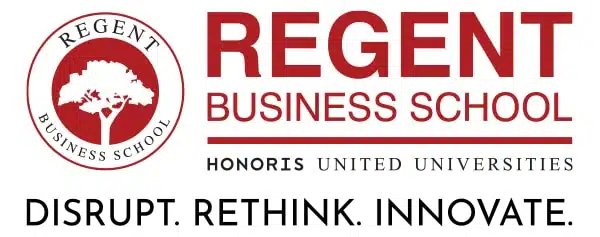
It was Michelangelo, world famous sculptor, painter, architect, and poet who once articulated that “Every block of stone has a statue inside it and it is the task of the sculptor to discover it”. All it required was imagination.
So join me in a journey of imagination in South Africa. The year is 2032 and things have changed for the better.
The era of corruption, state capture, cronyism and state plunder is now more than a decade behind us. Those responsible for such foul deeds have been brought to justice and are now serving ‘community time’. In terms of their punishment and rehabilitation, a truth and reconciliation tribunal has insisted that over and above their obligatory one year penal sentence, the children and grandchildren of these violators of crimes against humanity will be responsible for the offender’s re-habituation to a normal society. Community service for these miscreants is mandatory. The offspring of these offenders are held in high esteem within society and are specifically involved in education programmes that engender ethical behaviour. These children, the vanguards of a national societal renaissance are highly regarded and they destined to be change-makers and future leaders.
Indeed, things have ‘radically transformed’ in South Africa and we are now ruled by a coalition government, comprised largely of representatives from civil society organisations and a sprinkling of representatives from die-hard political parties of the past. The new dispensation has introduced an innovative model of democratic socialism into the governance equation. In essence it is truly a government of the people, by the people, for the people. The country is the new international benchmark for good governance, prosperity and peace. Undeniably, we are free, in every sense of the word. Our freedom fighters would be proud of the new South Africa.
We are standing on a hilltop admiring a scenic view of Shangrila, a sustainable and well-laid out city, formerly known as Soweto. It is no more the south western township of Johannesburg. The air enveloping this new digital hub is fresh and crisp and greenery abounds. Shangrila is the epitome of a Smart City in the fifth industrial revolution.
Suddenly we see some young children, both girls and boys, emerging from the doorway to a neat little cottage. They then exit through the garden gate and we decide to follow them to see the new South Africa.
They step out into a glorious sun-drenched day that is tempered with a light breeze. They happily walk on the pavement and the atmosphere is abuzz with laughter and gaiety as they discuss what they intend to buy from the local friendly cooperative. Democratically, they all decide to buy health lollypops with the budgeted money that they earned for their good deeds.
They eagerly tear the wrappers of their well-earned lollypops and search for the roadside garbage collection station where they carefully put the paper in a designated receptacle which was clearly marked as ‘recycled paper’. As they were mulling about the station to discard the wrappers, an elderly couple strolled by. An exchange of pleasantries followed between the children and the elders. The couple wanted directions to a neighbourhood supermarket and children obliged with the assistance of their smart phones. Judging from the tenor of the conversation as the elders left, it was quite obvious children felt proud that they provided service to senior members of their community.
Licking their lollypops, the children continue their walk on the pavement, not having to close their noses as vehicles passed by. The air was pollution-free. There were no open drains or piled up garbage to avoid. It was a clean and healthy environment. Even the neighbourhood dogs were friendly and wagged their tails in acknowledgment of the children’s greetings. No beggars were found at street corners or intersections. Poverty had been conquered, inequality was on the wane and crimes against person and property had almost been eradicated.
In their moment of joy, the children continued with their escapade and were even more adventurous. In their carefree abandon they decided to cross a bridge which spanned over a new stream that the planners of Shangrila had introduced to their new city from a nearby dam. They had no real intention or idea where they were going. They were on a journey to freedom.
As they crossed the bridge, they decided to look down at the stream and peered into the crystal clear water. The children did not even seem to notice the water’s purity. They simply enjoyed the distorted mirrored reflections of themselves as the stream’s tranquillity was disturbed by a stone thrown by one of their lot. They continued on their unchartered route, licking their lollypops. Further on they crossed the road at a zebra crossing just for the fun of seeing the cars pause for them. Public transport was battery powered and was driverless. Private taxi drones hovered above. Rules and regulations of road and air safety were electronically governed.
The children then skipped off and walked on the pavement of another winding street. They stopped at another garbage collection point which was almost adjacent to a humble-looking house, to throw their finished lollipop sticks into a bin. It was at this time they overheard the lady of the house saying to her husband how she had enjoyed her visit to the local Home Affairs office. She also talked about how just a decade ago it was almost like a visit to hell. It was only after she was able to bribe an official that her request for an identity document was finalised after a six month delay. She complemented the personnel at the office for their courteous behaviour and empathy in making her once more believe in humanity. In the new political dispensation civil service had been reclaimed as a calling.
The children were confused. They did not realise that years earlier such inhumane treatment at the Home Affairs office or any other government office for that matter had become a way of life.
The little ones began to hum their favourite tunes and saw a group of teenagers in their school uniforms in buses, heading to their schools with bright and cheerful faces. As they saw them, the children waved and they waved back, laughing at how adorable the little ones were, in their brightly coloured outfits. Overjoyed at being recognised by their elderly counterparts, they started to skip along the street once more, till they reached a statue. It was that of a skinny and frail child with unkempt hair and pitiful eyes. The effigy held a bent plate in his hand, and was gesturing his stomach, with tears in his eyes. The children were by now filled with curiosity and something akin to horror as they saw this statue standing there. As they lingered there, they heard another little one say, “Mama, why is that boy so sad?” to which the child’s mother explained about the history of poverty and begging and how it had been eradicated a decade ago.
The children went on, but no more skipping, as their hearts were heavy and their minds buzzing about that statue. They had never seen any child like that before. They walked on and came across a store displaying television sets. One set was tuned to the Mars where a new human colony had developed. On a news channel they watched the newsreader discussing with some government official cordially about the introduction of robotics in service delivery. Understanding little, they proceeded further and reached a park. There, they saw a girl talking to her friend about how she had taken environmental science as a career and why she had chosen so. In another bench, a few boys were discussing the recent international success of their national soccer team. Seeing no bench for them to sit on, they went over to the swings and glided to and fro, enlivened by all the greenery around.
Soon, the sun was starting to set and the children decided to head back home. But they had forgotten which way they came. They looked around. Everything seemed different in the dim light of the dusk. Just when they were about to panic, someone called, “Are you lost, little ones?” They looked up and saw a woman in uniform looking at them concernedly. Relieved to see a community-based policewoman, they all skipped over to her and informed her that they were lost.
Eventually, they all reached home, with the policewoman by their side, looking as cheerful as they had been when they had set out. They profusely thanked their rescuer and hopped into their respective cosy homes.
It was at this point a sudden thundershower had ended my imaginary expedition with the children of tomorrow and I was abruptly fast tracked to the realities of contemporary South Africa. Yet full of hope for our children and their future, despite the fact that we as an irresponsible generation had failed them.
Professor Dhiru Soni is Director for Research at REGENT Business School and writes in his personal capacity

